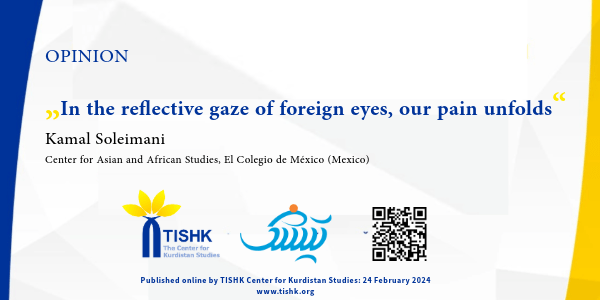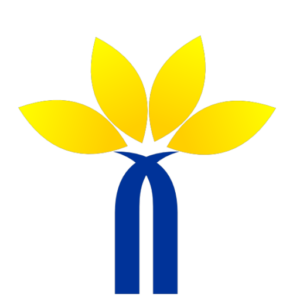
OPINION
Whispers of Kurdish Artists Fade into Obscurity
Published online by TISHK Center for Kurdistan Studies: 28 February 2024
Soleimani, Kamal. 2024. “Whispers of Kurdish Artists Fade into Obscurity.” TISHK Center for Kurdistan Studies, Kurdistan Agora.
Abstract

Whispers of Kurdish Artists Fade into Obscurity
Kamal Soleimani
I had never seen him before, but the echo of his gentle voice danced through the air, carried by whispers that wafted through the vicinity of our villages. When the lamentable news of his passing reached me, it hit me deep inside. For my generation, such deaths go beyond mere mortality. They are not commonplace deaths. It is not just the passing of a singer like Rassu Mamo, who embodies the artistic soul of my people, vanishing into the shadows like countless Kurdish departures every day. No, these deaths hold a weight far beyond the personal. They stand as poignant symbols of a living nation caught in the throes of an enduring crisis.
In life and in death, these singers become a symbol of a nation on the brink. A people oppressed by the political, cultural and linguistic colonization of the ruling state. Their existence, their art, their songs – all are battlegrounds in a struggle against an oppressive power.
In their lives and in the finality of their deaths, they embody the resilience of a nation in a constant state of exception. A nation in which every symbol and facet of its identity is under attack and bears the scars of incessant linguistic and cultural onslaughts. The struggle is vividly etched in their narratives, a testament to a people struggling to preserve their language, their culture and the essence of their being against the relentless tides of adversity.
Rassu Mamo emerged from the cocoon of poverty some 60 years ago and found his first cry in the whispers of a small village in East Kurdistan, which is under the rule of Iran. Fate gave him a fatherless childhood in which he had to survive the whims of his stepfather in a remote hamlet without schools, water or electricity. In this forgotten corner of existence, the sole semblance of “modernity” was a military base, a stern reminder of the perpetual effort to suppress the voices of the non-Persian inhabitants — the Kurds.
Amidst the complete absence of formal education, Mamo, a beacon of innate intelligence and with a voice that could move mountains, burgeoned into an artist. He serenaded in a language threatened by the specter of linguicide, weaving tales like a defiant whisper against the Persian state’s relentless historical campaign of assimilation. Yet, the stage for his melodic rebellion remained inaccessible. There were no platforms on which he could sing freely, no supportive currents to navigate him through the turbulent waters on the way to a professional singing career.
The lives of Kurdish artists represent a microcosm of the broader Kurdish experience, marked by subjugation, the relentless struggle for survival, and a ceaseless battle against marginalization and securitization. These artists, emblematic of the wider Kurdish populace, operate in a landscape fraught with restrictions and prohibitions where their artistic expressions are perpetually perceived as a threat to the national security of others.
In the grand tapestry of their existence, Kurdish artists embody a nation forced to study and contemplate in a language that paradoxically threatens its very being. Their education takes place in a system that threatens their history, culture, worldview and the core of their self-perception and self-determination. In this educational milieu, they are instilled with teachings that prompt a denial of their nationhood, fostering an atmosphere of self-hatred.
For Kurdish artists, engaging with their own art becomes a securitized journey, laden with ordeals that often culminate in a quiet death, shrouded in the obscurity enforced by external forces.
This characterization may appear as an exaggeration, but a direct comparison between the lives of Kurdish and Persian singers confirms this claim. When a Persian singer passes away, numerous funerals are likely to be organized where people of different ethnic backgrounds commemorate the artist. The media pays tribute for an extended period of time, conducting interviews with friends and discussing the singer’s contribution to the arts.
In contrast, a Kurdish singer often departs in solitude, with only a small circle of friends remembering them. Questions about which nation they belonged to, which culture they enriched and which community should commemorate them rarely arises with Kurdish artists. Even when remembered, they are often stigmatized as terrorists or traitors by the colonizing nation, as seen in the case of the esteemed Kurdish poet Jalal Maliksha a few years ago. While East Kurdistan mourned the poet’s death, a purported Persian human rights activist, Iraj Misdaqi, shamelessly besmirched the poet’s memory with baseless accusations.
Throughout my 34 years in exile, the songs of artists like Mamo have built a bridge between my life in exile and my homeland. They have kept the images of Kurdistan’s forests, mountains, waters, rivers, villages and cities alive in my memory. These songs have not only imprinted the names of numerous Kurdish places, villages and sites in my memory, but also functioned as an oral tradition, serving as a treasure trove that helps me remember everyday Kurdish life. However, essential details about these artists, such as their birth and death dates or the ways in which they created art to survive in a nation that was under constant oppression, remain hidden in the darkness of Persian colonial oppression. The rich cultural contribution and struggles of these artists are often overlooked or deliberately obscured, underscoring the need to unveil and acknowledge their stories.
Why is it that singers like Rassu Mamo are not recognized even in the hearts and minds of Kurds themseleves? How is it that their Persian counterparts can effortlessly occupy even the collective memory and emotions of non-Persians? Why does Sharwin Hajipouri, a singer who composed the song “Baray” during the 2022 Jina Revolution, receive international awards, while Kurdish singer Chia Madani’s reaction to Hajipouri’s song is largely ignored? Madani’s song, a genuine expression of the revolution’s birthplace and a protest against Hajipouri’s misinterpretation by sidelining its Kurdish origin and its women-centered message, seems to fall on deaf ears.
Why are Persian singers put on a pedestal while Kurdish singers are condemned to a fate of obscurity? It’s not a question of artistic quality and ingenuity – it is political power that determines the value of their art and their proximity or distance from the ruling nation. The position of power can elevate the work of one group to the status of “national art”, while relegating the other to the margins and insignificance. Taste, morality, and esthetics are inextricably linked to power relations. Just as power defines the standard and introduces the criteria for truth, it also establishes the ground and the framework for determining the nature of beauty and esthetics. Art and the value of art, as well as artists, are bound to the regime of truth. Everything that stands outside such a regime is marginalized and disregarded. Approaching the language of power can transform a work of art into a national masterpiece, while Kurdish songs like Memo’s are labeled as “local” or marginalized.
Rassu Mamo’s singing and artistic expression is perceived as a threat, an antinomy, a remnant of the forbidden “tribal dialect.” Mamo sang in an indestructible language that survived the linguistic onslaught of the state for a century. In contrast, Persian singers sang in the “sweet language of Persian,” contributing to the spread and enforcement of the language of the colonial power. Mamo’s tongue was branded as the language of “counter-revolution, the noise from afar and the roar in the far west of the Persian” colonial rule. On the other hand, the Persian singers’ expression symbolized “linguistic norms, the language of nationality and universality, its civilized tone, as it has supposedly been the language of kings, of those who received divine grace.” Mamo’s language represented an indecipherable cry signifying defiance and anomaly.
Kamal Soleimani is a member of the Advisory Board of the TISHK Center for Kurdistan Studies and a professor at El Colegio de Mexico, specializes in Islamic and Middle Eastern history and politics. Soleimani received his Ph.D. (2014) in Islamic and Middle Eastern history from Columbia University, NY, and has taught in Turkish and American universities. He is the author of a number of scholarly articles, including his book Islam and Competing Nationalisms in the Middle East (Palgrave, 2016). In this book, Soleimani questions the foundational epistemologies of the nation-state by focusing on the pivotal and intimate role that Islam played in the nation-state’s emergence. He shows how the entanglements and reciprocities of nationalism, and religious thought played out in the modern history of the Middle Easts




